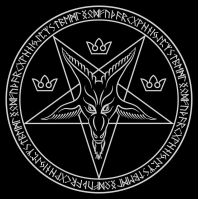 Throughout history, numerous religions have emerged, flourished, and eventually disappeared. These ancient belief systems offer fascinating insights into the cultures and societies that practiced them. This article explores several religions that are no longer practiced today, shedding light on their origins, beliefs, and ultimate decline.
Throughout history, numerous religions have emerged, flourished, and eventually disappeared. These ancient belief systems offer fascinating insights into the cultures and societies that practiced them. This article explores several religions that are no longer practiced today, shedding light on their origins, beliefs, and ultimate decline.
Ancient Egyptian Religion
The religion of ancient Egypt, with its pantheon of gods and elaborate rituals, was one of the most influential belief systems of the ancient world. Centered around a complex mythology, it included gods like Ra, Osiris, Isis, and Anubis, each representing different aspects of life and the cosmos.
Beliefs and Practices
Ancient Egyptians believed in the afterlife and practiced elaborate burial rituals, including mummification, to ensure safe passage to the next world. Temples were built to honor gods, and priests played a crucial role in performing rituals and maintaining religious traditions.
Decline
The decline of ancient Egyptian religion began with the conquests of Alexander the Great in 332 BCE, which introduced Hellenistic influences. The rise of Christianity in the Roman Empire further eroded traditional Egyptian practices. By the end of the 4th century CE, with the Edict of Theodosius declaring Christianity the state religion, ancient Egyptian religion had effectively disappeared.
Norse Paganism
Norse paganism, the religion of the Vikings and other Germanic tribes, was rich in mythology and featured gods such as Odin, Thor, Freyja, and Loki. It was a belief system deeply rooted in nature, warfare, and the heroism of its followers.
Beliefs and Practices
Norse mythology included tales of gods, giants, and epic battles. The religion emphasized honor and valor, with warriors aspiring to reach Valhalla, a majestic hall ruled by Odin, after death. Rituals included sacrifices, feasts, and the celebration of seasonal festivals.
Decline
The spread of Christianity across Scandinavia during the Viking Age, particularly between the 8th and 12th centuries, led to the gradual decline of Norse paganism. Missionaries and Christian kings converted the population, and by the end of the 12th century, Norse pagan practices had largely vanished.
Mithraism
Mithraism, also known as the Mithraic Mysteries, was a mystery religion practiced in the Roman Empire from the 1st to the 4th century CE. It was centered around the god Mithras, a deity associated with the sun and often depicted slaying a bull.
Beliefs and Practices
Mithraism was exclusive and initiatory, meaning only those who underwent certain rites could become members. The religion involved complex rituals held in underground temples called Mithraea. Central to its mythology was the story of Mithras killing a sacred bull, symbolizing the cycle of life and renewal.
Decline
Mithraism began to decline in the 4th century CE with the rise of Christianity, which became the dominant religion of the Roman Empire. The Edict of Theodosius in 380 CE, which made Christianity the state religion and prohibited pagan practices, marked the end of Mithraism.
Manichaeism
Manichaeism, founded by the prophet Mani in the 3rd century CE, was a syncretic religion that combined elements of Zoroastrianism, Christianity, and Buddhism. It spread rapidly across the Roman Empire, Persia, and even as far as China.
Beliefs and Practices
Manichaeism taught a dualistic worldview, positing a cosmic struggle between the forces of light and darkness. Mani claimed to be the final prophet in a line that included Zoroaster, Buddha, and Jesus. Followers practiced asceticism and sought to liberate the light trapped within the material world through spiritual discipline.
Decline
Manichaeism faced persecution from various religious and political authorities. It was condemned as heretical in the Roman Empire and suppressed by Zoroastrian authorities in Persia. By the 10th century, Manichaeism had largely disappeared, though it left a lasting influence on other religious movements.
The history of these no longer-existing religions highlights the dynamic nature of human belief systems. As cultures evolved and interacted, new religions emerged, and old ones faded, leaving behind rich legacies that continue to influence modern spirituality and cultural practices. Understanding these ancient religions provides valuable insights into the diverse ways humanity has sought to understand the world and the divine.



